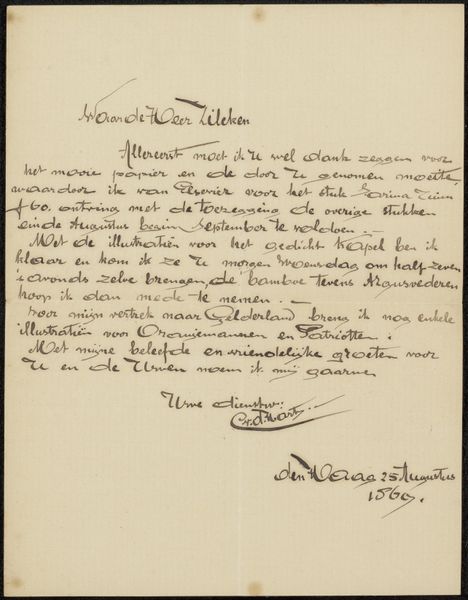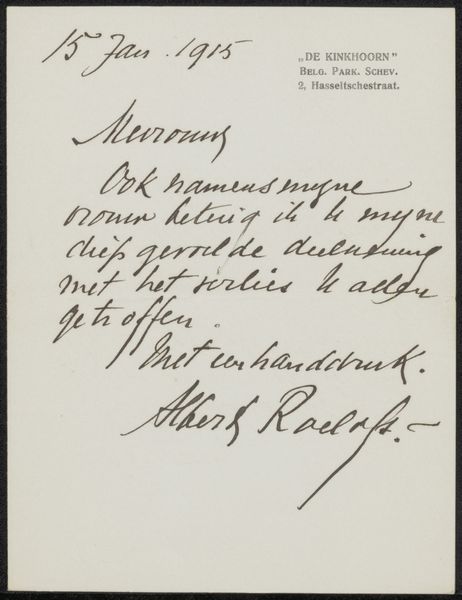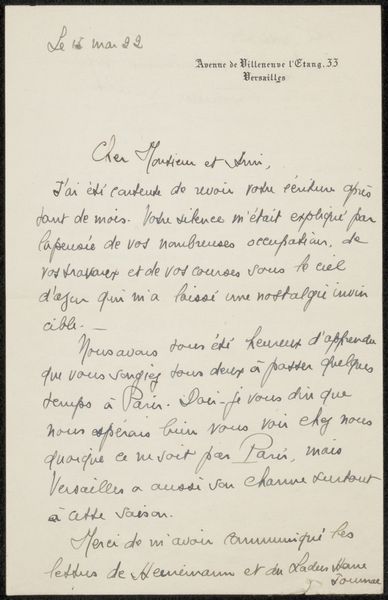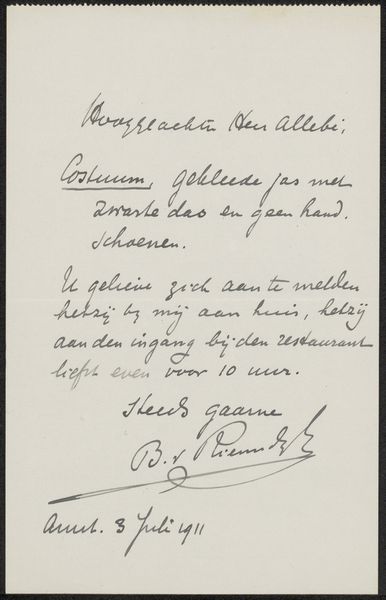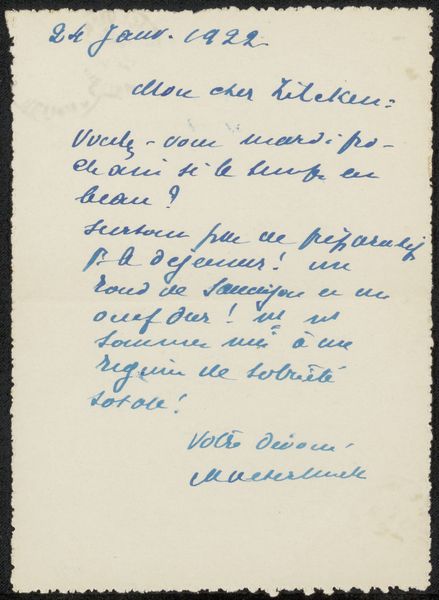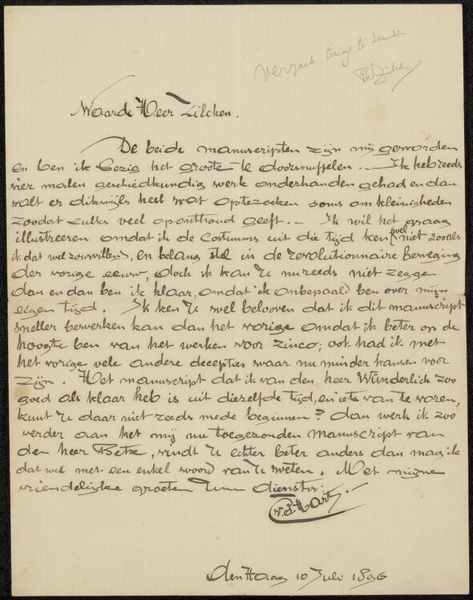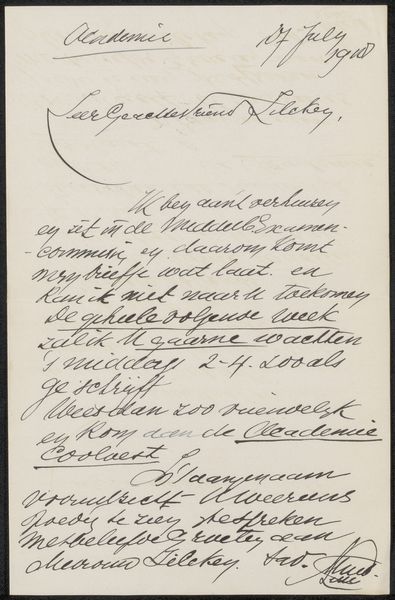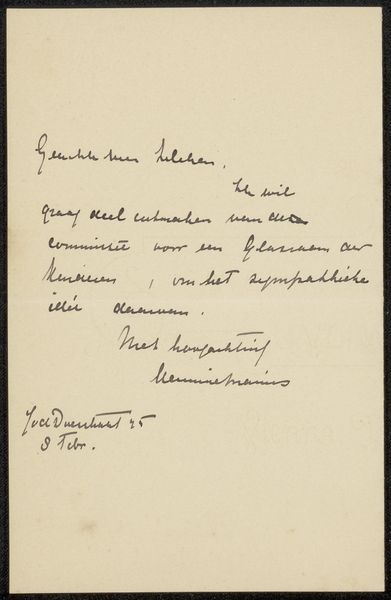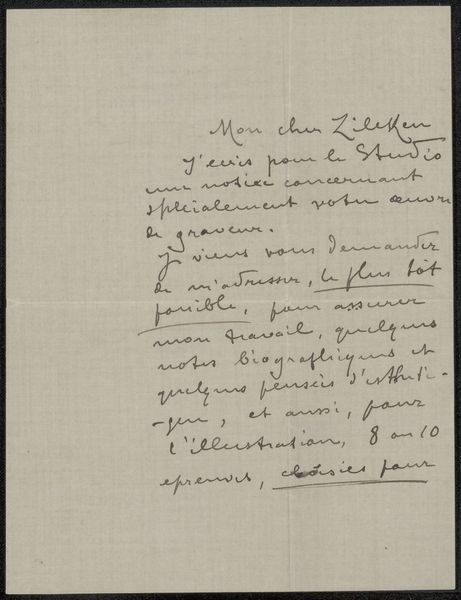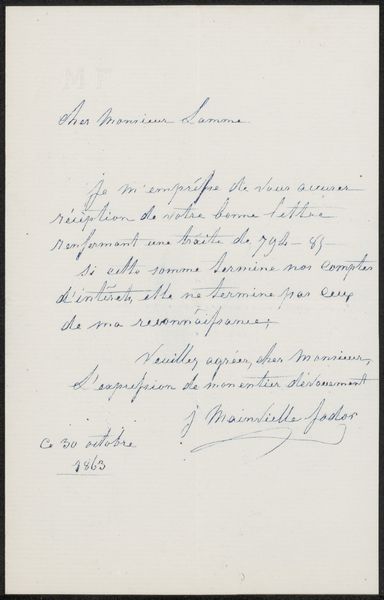
drawing, paper, ink
#
drawing
#
paper
#
ink
Copyright: Rijks Museum: Open Domain
Curator: Looking at Cornelia van der Hart’s “Brief aan Philip Zilcken,” likely penned sometime between 1861 and 1930, I immediately notice its intimate scale and the immediacy conveyed by the handwritten text. The blue-black ink on the aged paper is quite striking. What's your initial impression? Editor: Well, my eye is drawn to the density of the script itself. The loops and ligatures create a texture that feels almost woven. It emphasizes the labor involved in communication before mass printing. It makes you wonder about the type of paper and ink available. Curator: Indeed, but it’s more than just the physical act of writing. Think about the performative nature of letter writing at the time. A "brief," such as this, becomes a stage upon which gender, class, and social standing are all enacted, performing the writer’s own identity. Editor: That performance, as you call it, is entirely dependent on the physical means of creating the letter. The nib of the pen, the quality of the ink, the rag content of the paper all affect the writer’s hand. Curator: Exactly. The materiality and method, or mode of communication if you will, becomes integral to constructing and conveying a sense of self in these interactions. Editor: There’s a strong connection to daily labor too, I think. Each letter embodies both the physical task of writing and potentially, the artistic labor van der Hart mentions—could the drawings referred to in the letter reflect commissioned or self-directed works for profit? Curator: A worthwhile thought. Also note how this act challenges modern notions of professional life; particularly if we apply contemporary thought around work/life boundaries, labor division and expectations, to this seemingly quaint object, “Brief aan Philip Zilcken." Editor: I find the convergence between material and cultural elements quite strong. The finished artwork allows us to further question artistic and societal hierarchies. Curator: Examining "Brief aan Philip Zilcken” highlights how historical personal communications intersect with socio-economic frameworks of artistic labor. Editor: Precisely, considering the tangible creation as crucial unlocks layers within history.
Comments
No comments
Be the first to comment and join the conversation on the ultimate creative platform.
